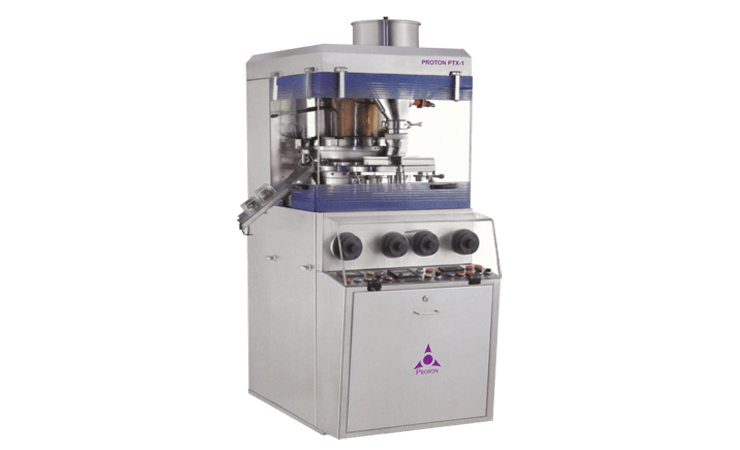We use a tablet press to compress powder into tablets that are uniform in size, weight, and shape. These tablets find use in the pharmaceutical, cosmetics, and cleaning industry. The process of making these tablets is simple. A fixed quantity of granulated material is measured into a cavity that is in between a punch and a die.
The operation for making tablets:
Once the powder is in place, we bring the two punch and die together with great force. Typically, the amount of power is determined by the lower cavity. By increasing or decreasing this depth, we can make the size of the tablet more or decrease it. The excess material is scraped off the top of the die. The punch is brought in line with the punch and a suitable cover is provided to keep the material from falling.
A force is applied through the punch and this compresses the material. The compacted tablet is now ready for packaging and shipping. The Pharmaceutical Tablet Press is designed taking into consideration the quantity of material needed in each tablet. The size is decided by other aspects such as handling comfort and ease of packing.
Types of tablet presses:
There are two kinds of tablet presses in use. One is the single punch press and the other is the rotary press. The single punch press is used for a variety of purposes in various industries such as metallurgy, food, chemical, and pharmacy. The operations are automatic meaning that the tablets are continuously loaded, packed, and compacted without a break. The formed tablets are ejected to make space for the new tablets.
It has all the latest features such as low noise, high precision of filling, smooth operation, and low consumption of materials. All components are covered with chromium or made of stainless steel and glass.
Parts of the press:
All the high-speed tablet presses will have a common rotating turret. This will hold many punches. When the rotation occurs, the punches get pressed to the cams that control how the punch is positioned. You will need to customize the cams and the punches for each application in the Pharmaceutical Tablet Press. It is possible to change the size and shape of the punch and die to accommodate manufacturing code and scoring lines made to help break the tablet. For all normal size tablets, the press has a capacity of 250,000 to 1,600,000 tablets in an hour.
We have a double-sided rotary machine for making tablets. It has a hopper that holds the granulation and feeds it uniformly to the machine. Below this, there are the dies that define how the tablet is shaped. The punches help to compact the tablet. The cams help guide and move the punches. We also see the free paddle that helps direct material into the die cavity. There is a control mechanism that controls most functions of the machine. The ejection cam removes the tablet from the cavity. The advantage of this double-sided rotary machine is that it has a high production capacity.

